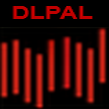
A way to an improved Size and Value Factors
" … an inflation of the number of variables needed to explain the cross-section of stock returns can be interpreted in two very different ways. It can be the reflection of a complexity in the return generation process that had been formerly ignored, and thus represent a real advance in empirical asset pricing. Or the need to increase the number of factors could just represent an admission of weakness in the quest for parsimony in factor models, because the right way to unfold the universe of systematic risk exposures has not been found. If the latter explanation prevails, then researchers should keep on attempting to improve factor construction methodologies in order to show that the supplementary risk premiums become useless when the original ones are properly determined. Before moving to five-, six- or seven-factor models, one should first do whatever possible to reject all possible explanations of deficiencies of the original three-factor asset pricing model. This is the major objective of our paper, and we believe that it contributes to reinforcing a parsimonious approach to asset pricing.
The independent sorting procedure pertaining to the Fama and French factor construction method could provide a realistic explanation for these apparent pollution effects, but this conjecture needs to be rigorously scrutinized. This scrutiny has not formed the primary focus of the aforementioned studies. Our main arguments rely on the fact that the Fama and French sorting methodology leads to an inconsistent definition of value stocks: in their framework, value stocks are tilted towards micro-capitalizations. Our paper revisits the way in which size and book-tomarket effects translate onto risk factors: We show that the Fama and French premiums are contaminated by cross-effects that are not adequately neutralized by their independent sorting procedure. To achieve this objective, we follow the sequential methodology proposed by Lambert and Hübner (2013), used to isolate fundamental risks into portfolio returns. By removing contamination effects in the way to construct empirical risk premiums, we aim to shed new light on the relative importance of the size and book-to-market effects in the US market over an extended period (1963-2014). We demonstrate the existence of a strong value effect, whereas not in the way Fama and French measure it1. We differentiate ourselves from the cited literature challenging the existence of size and value effects by controlling ex ante for external factors rather than a posteriori."
Are you looking for more strategies to read about? Sign up for our newsletter or visit our Blog or Screener.
Do you want to learn more about Quantpedia Premium service? Check how Quantpedia works, our mission and Premium pricing offer.
Do you want to learn more about Quantpedia Pro service? Check its description, watch videos, review reporting capabilities and visit our pricing offer.
Are you looking for historical data or backtesting platforms? Check our list of Algo Trading Discounts.
Would you like free access to our services? Then, open an account with Lightspeed and enjoy one year of Quantpedia Premium at no cost.
Or follow us on:
Facebook Group, Facebook Page, Twitter, Linkedin, Medium or Youtube
Share onLinkedInTwitterFacebookRefer to a friend

















